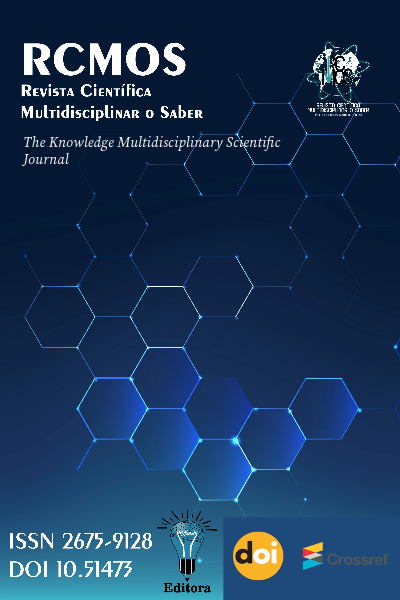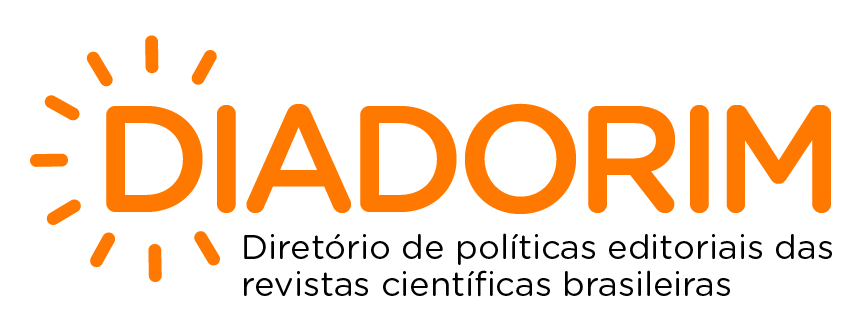Geographic Information Systems (GIS) in the Logistic Planning of Food Distribution inVulnerable Regions
Geographic Information Systems (GIS) in the Logistic Planning of Food Distribution inVulnerable Regions
DOI:
https://doi.org/10.51473/rcmos.v1i8.2021.1107Keywords:
Geographic Information Systems; Food Security; Humanitarian Logistics; Vulnerable Regions; Food Distribution.Abstract
This scientific article aims to assess how Geographic Information Systems (GIS) can be
employed in the logistical planning of food distribution in vulnerable regions, with special
focus on areas characterized by chronic food insecurity. Using a methodological approach
based on bibliographic review and analysis of national and international case studies, this work
highlights the strategic role of GIS in optimizing logistics, accurately mapping population
needs, and improving food assistance coverage. Based on research promoted by organizations
such as FAO, WFP, and renowned scholars in geotechnology and food security, it is argued
that GIS are essential tools for more equitable and effective public policies. The use of
geospatial data enables evidence-based interventions, allowing for more efficient allocation of
resources and broader outreach to marginalized populations. The articulation between
technology, planning, and social justice is the core of this work, which proposes practical
solutions to one of the greatest challenges of modern times: hunger.
Downloads
References
ARVIS, J.-F. et al. Connecting to Compete 2018: Trade Logistics in the Global Economy.
Washington, DC: World Bank, 2018.
BALLOU, R. H. Gerenciamento da cadeia de suprimentos: planejamento, organização e
logística empresarial. 5. ed. Porto Alegre: Bookman, 2006.
BURROUGH, P. A.; MCDONNELL, R. A. Principles of Geographical Information Systems.
nd ed. Oxford: Oxford University Press, 1998.
CLARKE, K. C. Getting Started with Geographic Information Systems. 4th ed. New Jersey:
Prentice Hall, 2003.
COMPANHIA NACIONAL DE ABASTECIMENTO – CONAB. Boletim da Agricultura
Familiar e Segurança Alimentar. Brasília: CONAB, 2020. Disponível em:
FAO – Food and Agriculture Organization. The State of Food Security and Nutrition in the
World 2020. Rome: FAO, 2020. Disponível em: https://www.fao.org.
HEYWOOD, I.; CORNELIUS, S.; CARVER, S. An Introduction to Geographical Information
Systems. 4th ed. Essex: Pearson Education, 2011.
INSTITUTO BRASILEIRO DE GEOGRAFIA E ESTATÍSTICA – IBGE. Pnad Contínua:
Segurança Alimentar 2017–2018. Rio de Janeiro: IBGE, 2020.
KOVÁCS, G.; SPENS, K. M. Humanitarian logistics and supply chain management: the start
of a new journal. Journal of Humanitarian Logistics and Supply Chain Management, v. 1, n.
, p. 5–14, 2009. DOI: https://doi.org/10.3917/books.005.0014
LONGLEY, P. A. et al. Geographic Information Systems and Science. 3rd ed. Chichester: John
Wiley & Sons, 2015.
ORTEGA, R. A.; SÁNCHEZ, M. C.; LÓPEZ, J. M. SIG como apoio à logística rural: estudo
de caso no sul da Colômbia. Revista Latinoamericana de Geoinformática, v. 15, n. 2, p. 55–
, 2017.
TOMLINSON, R. Thinking about GIS: Geographic Information System Planning for
Managers. 3rd ed. Redlands, CA: ESRI Press, 2003.
VAN WASSENHOVE, L. N. Blackett Memorial Lecture: Humanitarian aid logistics: supply
chain management in high gear. Journal of the Operational Research Society, v. 57, n. 5, p.
–489, 2006.
GUPTA, R.; SHARMA, S. Segurança em plataformas cloud: desafios e soluções. Revista de
Segurança da Informação, v. 9, n. 2, p. 35–50, 2020.
KAGERMANN, H.; WAHLSTER, W.; HELBIG, J. Recommendations for implementing the
strategic initiative INDUSTRIE 4.0. Final report of the Industrie 4.0 Working Group, acatech
– National Academy of Science and Engineering, 2013.
KUMAR, V.; RAO, K. Collaborative supply chain management enabled by cloud computing.
International Journal of Logistics Management, v. 28, n. 1, p. 88–107, 2017.
KUMAR, P. et al. AI and machine learning in supply chain management: trends and future
directions. Journal of Industrial Engineering, v. 45, n. 4, p. 210–225, 2020.
LEE, H.; PARK, J. Risk management in supply chains using predictive analytics. Journal of
Supply Chain Management, v. 56, n. 3, p. 50–64, 2020.
LEE, S.; KIM, J.; CHOI, H. Customer-centric supply chain strategies enabled by digital
technologies. International Journal of Production Economics, v. 211, p. 1–12, 2019.
LI, J.; WANG, T. Mobile applications in cloud-based supply chain management: a case study.
Journal of Business Logistics, v. 39, n. 2, p. 85–101, 2018. DOI: https://doi.org/10.1111/jbl.12180
LUND, S. et al. Industry 4.0 and the digital transformation of supply chains. McKinsey Digital,
MARSTON, S. et al. Cloud computing – The business perspective. Decision Support Systems,
v. 51, n. 1, p. 176–189, 2011.
MARTINS, F.; OLIVEIRA, P. Logística sustentável e otimização de transporte: um estudo
com Oracle SCM Cloud. Revista Brasileira de Logística, v. 10, n. 2, p. 45–60, 2021.
MCKINSEY & COMPANY. Digital supply chains: enhancing resilience through technology.
McKinsey Report, 2018.
MELNYK, S. A. et al. Supply chain automation and process improvements. International
Journal of Operations & Production Management, v. 39, n. 6, p. 695–718, 2019.
MOLINA, J. F. et al. Interoperabilidade de sistemas na cadeia de suprimentos. Revista
Eletrônica de Sistemas de Informação, v. 15, n. 3, p. 120–134, 2019.
MORRIS, C. et al. Digital ecosystems in supply chain management: future directions. Journal
of Supply Chain Innovation, v. 7, n. 1, p. 5–18, 2020.
MURPHY, D.; KNOTT, D. Artificial intelligence in cloud SCM: a review. Journal of Supply
Chain Technology, v. 8, n. 2, p. 95–110, 2020. DOI: https://doi.org/10.1007/s42488-020-00025-z
OLIVEIRA, T.; PEREIRA, R. Avaliação do custo-benefício em projetos de transformação
digital. Revista de Administração Contemporânea, v. 23, n. 4, p. 512–530, 2019.
ORACLE. Oracle SCM Cloud overview. Oracle Corporation, 2021. Disponível em:
https://www.oracle.com/scm-cloud/. Acesso em: 15 jun. 2025.
PEREIRA, A. C.; SILVA, F. R.; ALMEIDA, J. F. Uso de Oracle SCM Cloud na indústria
farmacêutica: um estudo exploratório. Revista Farmacêutica, v. 25, n. 3, p. 77–89, 2020.
RAMOS, L. et al. Segurança cibernética na nuvem: desafios atuais. Revista Brasileira de
Segurança da Informação, v. 12, n. 1, p. 28–42, 2021.
SANTOS, M. et al. Adoção de soluções em nuvem na cadeia logística brasileira. Revista
Logística Brasil, v. 8, n. 2, p. 102–118, 2020.
SANTOS, R. F. et al. Sustentabilidade digital na cadeia de suprimentos. Revista de Gestão
Ambiental, v. 13, n. 4, p. 75–88, 2021. DOI: https://doi.org/10.33282/abaa.v13i51.739
SMITH, J.; JOHNSON, R. Blockchain applications in supply chain: a review. International
Journal of Logistics Research, v. 15, n. 2, p. 50–68, 2021.
SOUSA, P.; ALMEIDA, R. F. Gestão da mudança na implantação de SCM digital. Revista de
Administração e Tecnologia, v. 14, n. 1, p. 99–115, 2020. DOI: https://doi.org/10.32031/ITIBTE_ITJ_14-DM6
TAN, K. et al. Cost reduction through cloud supply chain management. Journal of Business
Logistics, v. 40, n. 1, p. 30–47, 2019. DOI: https://doi.org/10.1111/jbl.12203
TUCKER, M. Digital transformation in supply chains: a systematic review. International
Journal of Production Research, v. 57, n. 10, p. 3123–3143, 2019.
WANG, S.; ZHANG, Y. Real-time visibility in cloud supply chains. Journal of Operations
Management, v. 58, p. 47–61, 2020. DOI: https://doi.org/10.36486/mst2411-3816.2020.2(61).5
ZHANG, L.; LIU, X. IoT-enabled supply chain transparency. Journal of Supply Chain
Management, v. 55, n. 3, p. 20–35, 2019. DOI: https://doi.org/10.17979/rgf.2019.20.0.5916
Downloads
Additional Files
Published
Issue
Section
License
Copyright (c) 2021 José Flavio Coutinho de Souza (Autor)

This work is licensed under a Creative Commons Attribution 4.0 International License.
















